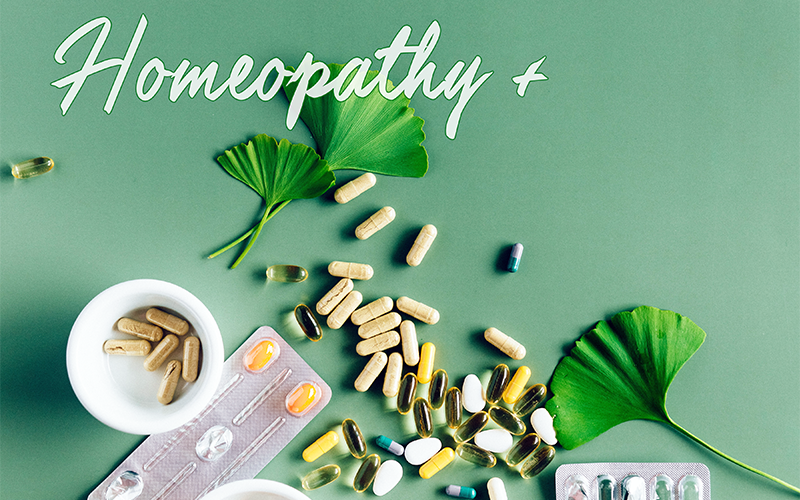By Luc Chaltin, ND DIHom
In order to understand how homeopathy complements herbs and nutritional supplements by increasing their effectiveness, an historical background is necessary.
Two hundred years ago, Hahnemann conceived homeopathy in an effort to replace the poisonous medicines of his time. Those medicines were often mercury and arsenic. His patients were the simple peasants of Germany, at a time when the soil and the food were not polluted. These patients suffered mostly from acute diseases and the most dangerous ailments were fevers, such as typhoid fever and cholera. These conditions were treated successfully with homeopathy. This allowed Hahnemann to establish the rule of the similimum as the basic approach to prescribing homeopathic remedies. One remedy at a time, with consultations one to two months apart.
Later, when he married a wealthy Frenchwoman and moved to Paris, he was confronted with members of the French upper class whose life style was not so simple. The members suffered from more complicated diseases, due to an abundant consumption of wine and all kinds of meats. Hahnemann changed his prescribing to more than one remedy, more frequent intervals, even every day in some cases, along with Sulfur for the chronic miasm known as psora.
In Hahnemann’s time, biology and immunology were not scientifically established. As such, he did not know what the real cause of chronic disease was. We know today that chronic disease results from an overload of toxins and metabolic dysfunction. As a form of metabolic disease, chronic disease occurs because of changes in metabolism caused by toxins. At the same time, they can be accompanied by infections, caused by bacteria, viruses and/or other pathological agents. But these microbes develop only because the metabolic strength of the cells has been weakened by the toxic load, and thus are a mere side effect of the disease. Because of the widespread presence of toxins in today’s food and environment, today’s diseases are almost exclusively chronic in nature and acute diseases are rarely seen. When acute disease is seen, it is only in children and young adults with very few exceptions in some very healthy adults.
In the beginning of the 20th century, French homeopaths such as Vannier and Bernard discovered how to treat chronic disease successfully. These French doctors discovered that in order to cure chronic disease, all of the symptoms must be addressed at the same time with the appropriate homeopathic remedies. They were successful in their time but alas, today’s problems are even worse.
My research in this field showed that the problem is more complicated and my personal problems helped me to understand what is happening. I was diagnosed with tuberculosis in 1965 and tried two different homeopaths for help. The first prescribed Nux vomica 200c which did not cause any response in my situation. The second, a famous Belgian homeopath in Brussels, did not even want to treat me because in his opinion, tuberculosis (chronic disease) is incurable with homeopathy. Although I was not a homeopath at that time, I decided to treat myself and succeeded in curing myself of tuberculosis in six months.
Because I had suffered with bad intestinal problems for years before contracting tuberculosis, I decided I would now be able to cure myself from my chronic intestinal problems as well. But it took me more than ten years before that became possible. During those years, I discovered what was really going on when you become chronically ill. I also became a successful homeopath because of the insight gained from working with chronic disease.
In order to succeed in curing chronic disease, the individual qualities and reactions of the patient’s metabolism have to be taken into account. The major problem is that chronic disease affects the whole body, including all of the cells and and glands. This is the reason that absorption of food – especially vitamins, minerals and trace minerals – is incomplete, that the function of the glands is impaired, and that the patient suffers from fatigue and exhaustion.
This requires that patients (your clients) change their lifestyles which caused disease in the first place. This includes changing to a diet of exclusively organically-grown food, the use of nutritional supplements every day, and regular exercise adapted to their capabilities.
It is also necessary to help the patient remove the toxins that this change of lifestyle and the use of homeopathic remedies will liberate from the tissues and organs. Removing these toxins is the role of the liver. In cases of chronic disease, the liver is not functioning properly and when toxins are liberated by the use of homeopathic remedies and/or herbs, the patient may become sick. This reaction is called an aggravation or healing crisis.
When the French homeopaths established the rules to treat chronic diseases successfully, they made the use of a detoxifier mandatory in all cases in order to prevent healing crises and to promote healing.
The liver detoxification process is also helpful in other ways. Because of the fact that absorption of food is affected, the action of the supplements that are taken will not be as strong as it could be. If herbs are used to correct some of the symptoms, they may not be absorbed completely. All of this is due to a liver that is not functioning properly. It is thus necessary to address liver function with specific homeopathic single remedies, or better yet, a liver complex. Some of the recommended homeopathic liver drainer remedies as found in the Materia Medica include Bryonia, Taraxacum, Nux vomica, Solidago, Berberis, and Chelidonium. Herbal liver remedies include milk thistle, blessed thistle, dandelion and golden rod.
Homeopathy works directly on the metabolism of the cells throughout the body. When it corrects metabolic functions, it also liberates toxins that need to be excreted. That is the reason why a detoxifying remedy or complex is used at the same time. But if the person continues to eat the regular American diet with its additives, chemicals and pesticides, the situation will not improve much, if any.
When the cells are stimulated by the homeopathic remedies, they need more vitamins, minerals and trace minerals, especially vitamin C in large quantities, to sustain the improved metabolism. If you take herbs, and they seem to work insufficiently after a while, think about the role of the toxins and the liver and consider some detoxifying remedies to take with the herbs. In fact, the situation today is so that practically every single person needs liver detoxification. And they will tell you that they feel better and have more energy when they use a detoxifying remedy or complex.
The use of a detoxifier also helps in the search for remedies in the case of difficulties in finding clues to what to do next. We have had calls from people telling us that the use of a detoxifier alone relieved breathing problems and asthma, or bladder infections or eczema. Others told us that herbs which had ceased working were suddenly working much better again. All this makes sense if you know that the key is simply the stimulation of the liver to eliminate the toxins that cause the problems.
It is clear that informed consumers can help themselves more by taking the right detoxifying remedies. It is my experience that of all detoxifying products, the homeopathic form is the most powerful.
There is a simple precaution that needs to be taken when you take a detoxifier. The remedy or complex should be taken once a day for at least three days before taking it more often in order to avoid a healing aggravation. If you feel that your response is too strong, discontinue the detoxifier for three days and start again with only one drop or pellet of the remedy. After that amount is tolerated for another three days, gradually increase the dose to reach the normal amount.

